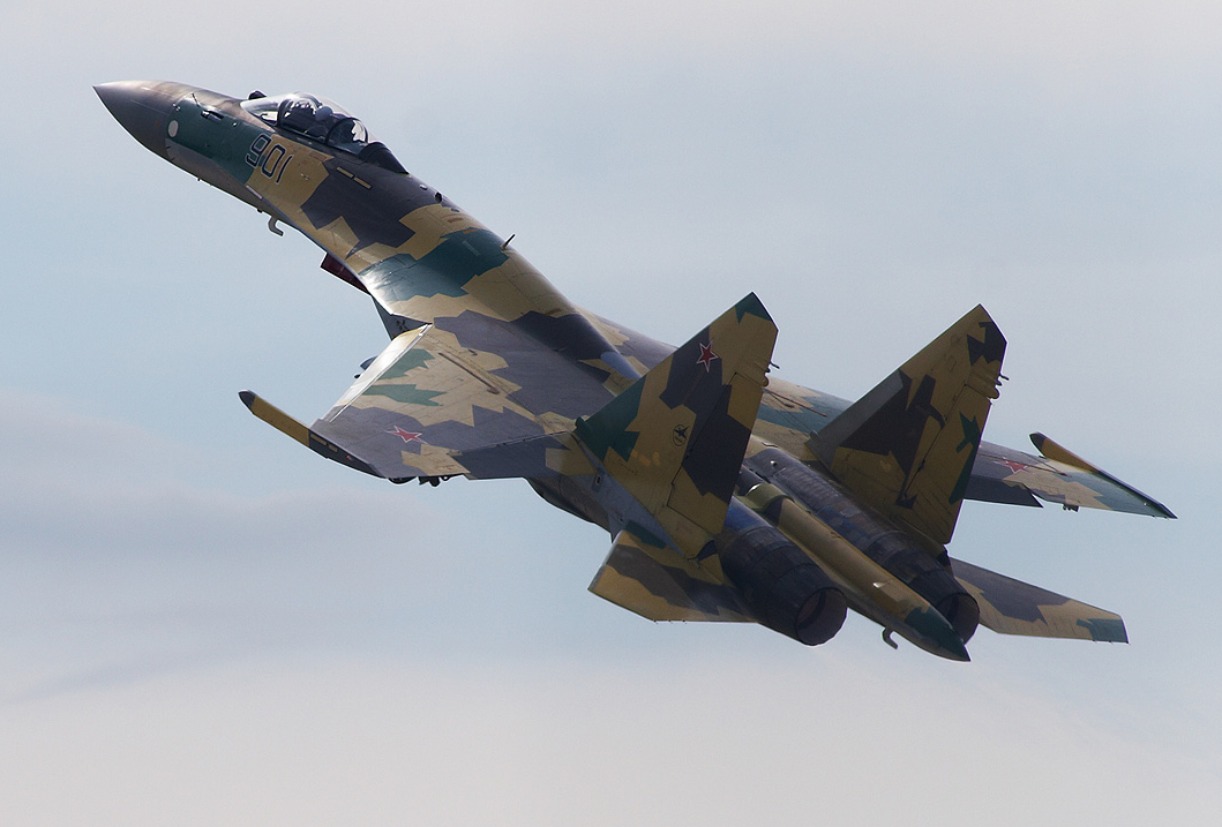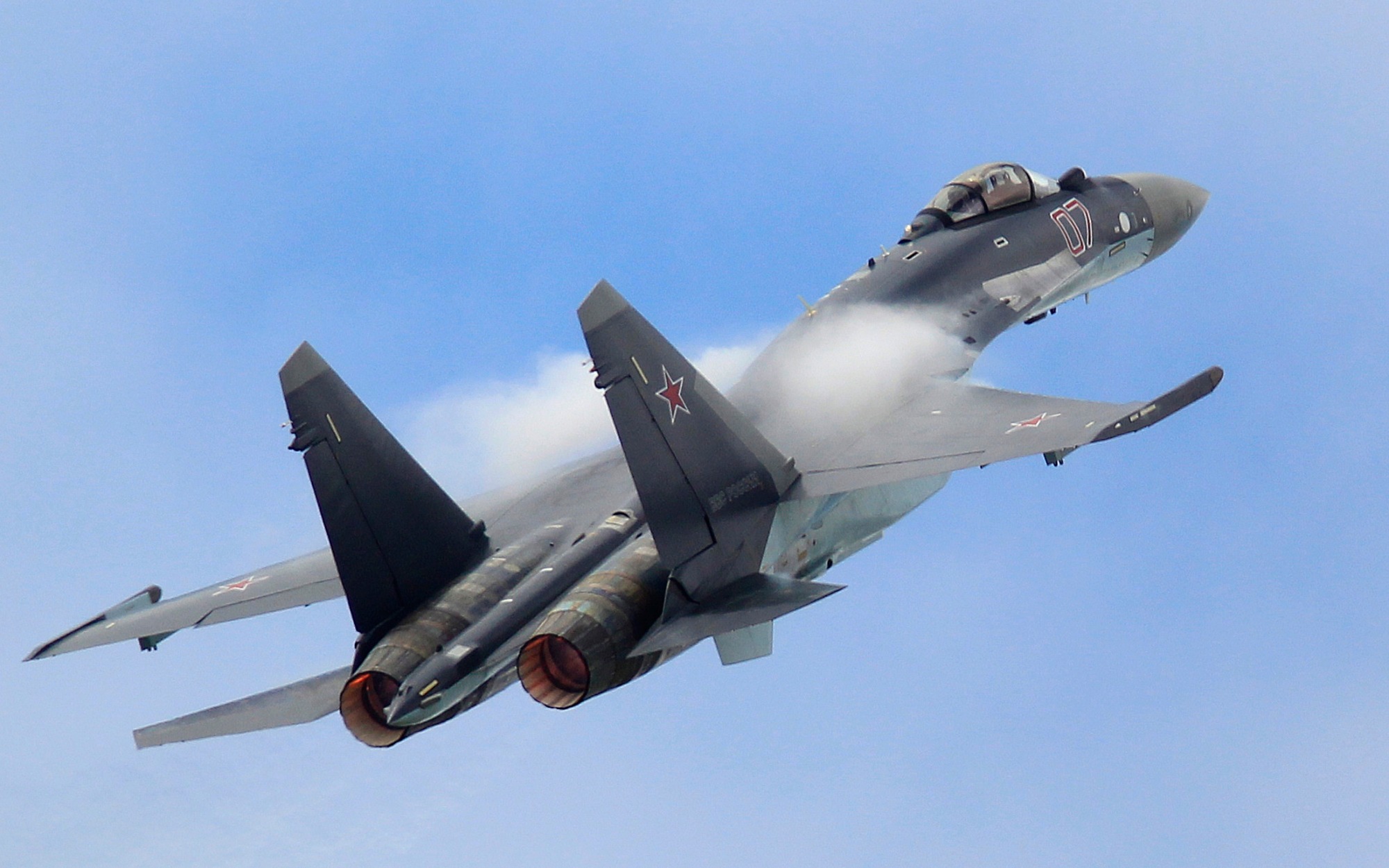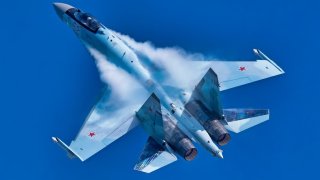Russia's Su-35 Fighter Is Getting 'Smashed to Pieces' Over Ukraine
Russia's invasion of Ukraine has highlighted the limitations of its military capabilities, particularly its failure to secure air superiority. Despite its advanced design, the Su-35 fighter jet has faced significant losses in Ukraine, with many downed since the war began.
Summary and Key Points: Russia's invasion of Ukraine has highlighted the limitations of its military capabilities, particularly its failure to secure air superiority. Despite its advanced design, the Su-35 fighter jet has faced significant losses in Ukraine, with many downed since the war began.

-The Su-35 boasts advanced avionics, a powerful weapons-control system, and high maneuverability, but it has struggled in the Ukrainian theater, with numerous crashes and losses.
-Russia's inability to maintain air dominance has contributed to the prolonged war of attrition, casting doubt on the effectiveness of its air force.
Russia's Su-35 Fighter Struggles in Ukraine: A Closer Look at Recent Losses
Russian President Vladimir Putin’s decision to invade Ukraine has sharpened the focus on the capabilities of Putin’s forces.
The invasion has not gone well for Russia. The territorial gains that motivated Putin to invade have not materialized. The airspace above Ukraine, which Russia needed to secure in order to make territorial gains, is not secured. And as the conflict enters its 27th month, without positive movement for Putin, Russia is starting to look incapable.
The Russian failure to secure the airspace above Ukraine is especially surprising. It led to a war of attrition that has ground forward for over two years, causing immense loss of life and equipment. Russia, especially, has suffered heavy losses to their troops and equipment, including to sophisticated fighter aircraft like the Su-35 Flanker.
Trouble in the skies
The Su-35 is a derivative of the Su-27. But unlike the Su-27, the Su-35 features canards aft of the wings and a reshaped wing leading-edge extension. These attributes allow the Su-35 to fly at high angles of attack without buffeting, a problem that plagued the Su-27.
The refined flight surfaces of the Su-35 not only ward off buffeting problems, but also allow for the Su-35 to handle upward of 10 Gs. Operating with a fly-by-wire control system and a 10 G capability, the Su-35 is an especially maneuverable aircraft.
The Flanker was also upgraded internally. It features a new weapons-control system that includes a phase-arrayed radar with pulse-Doppler tracking known as the N011 Bars. With this system, the Su-35 can track targets below the horizon – the Su-35 engages with ground targets more readily than the Su-27, which relied on the N001 Mech radar system.
Whereas the N001 could track 10 targets and deploy two missiles simultaneously, the N011 can track 15 targets and deploy six missiles simultaneously.
With 30,900 pounds of thrust generated from two Saturn AL-41F1S turbofan engines, the Su-35 is also quite powerful, with a top speed of Mach 2.25.
Struggles in Ukraine for Su-35 Fighter
Despite the Su-35’s impressive features, the fighter has had problems in the Ukrainian theater. Multiple Su-35s have been lost, including one off the coast of Crimea in March. According to The Guardian, “Footage online showed a jet on fire spiraling into the sea and exploding…The Russian-installed governor of the illegally occupied region…said on Thursday the pilot ejected and was picked up by rescuers but have no details as to the cause of the crash.”
The Su-35 has been involved in a lot of different crashes. Two other Su-35s were shot down in February. Forbes reported that Russia had likely lost “six of their 120 Su-35s.” As of now surely even more have been lost.
“The Russian air force has lost 95 jets since February 2022,” Forbes wrote. “That’s four per month. In [February 2024], however, the air force has written off warplanes at a rate of 60 per month.”

If the Russians are going to sustain their invasion of Ukraine, they will need to keep their aircraft, including the Su-35, airborne.
About the Author: Defense Expert Harrison Kass
Harrison Kass is a defense and national security writer with over 1,000 total pieces on issues involving global affairs. An attorney, pilot, guitarist, and minor pro hockey player, Harrison joined the US Air Force as a Pilot Trainee but was medically discharged. Harrison holds a BA from Lake Forest College, a JD from the University of Oregon, and an MA from New York University. Harrison listens to Dokken.
All images are Creative Commons or Shutterstock.
From the Vault
Russia Freaked Out: Why the U.S. Navy 'Unretired' the Iowa-Class Battleships
Battleship vs. Battlecruiser: Iowa-Class vs. Russia's Kirov-Class (Who Wins?)


